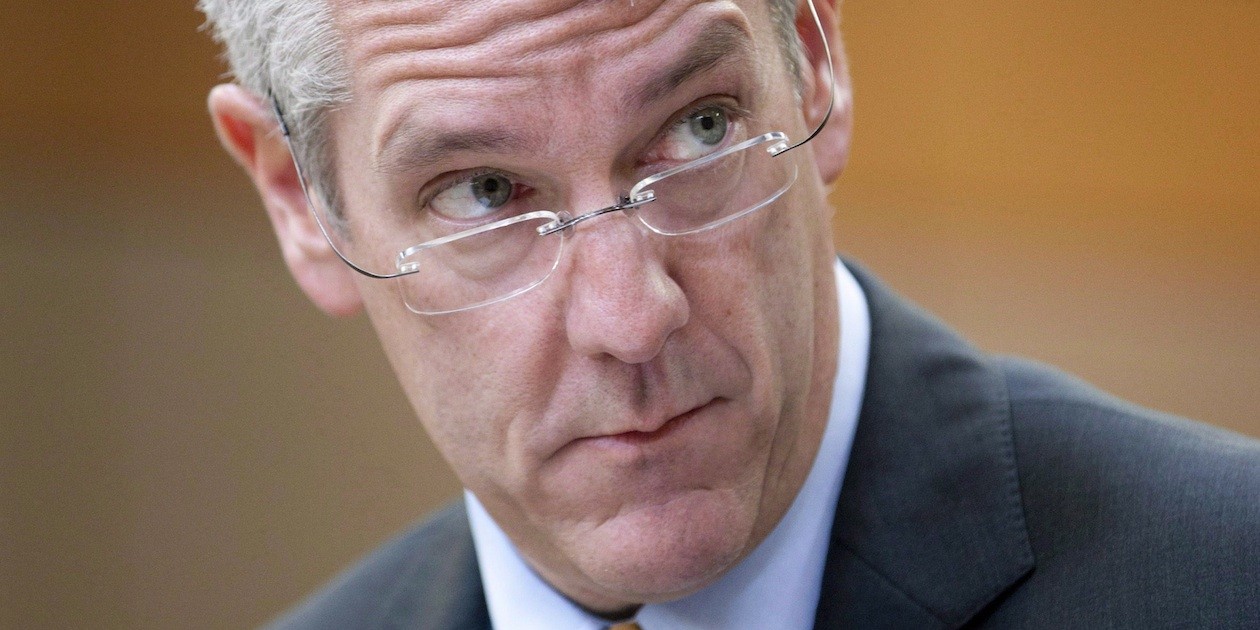This story was updated on Feb. 18 at 5:25 p.m.
If [broadcasters] fail to live up to their end of the bargain with Canadians, we will not hesitate to take action
Jean-Pierre Blais
With Liberal MP and heritage committee chair Hedy Fry set to lead a new federal study into the state of the country’s news media, CRTC chairman Jean-Pierre Blais says his organization will continue to hold broadcasters accountable for the “social contract” they have with Canadians.
In a wide-ranging speech before the Canadian Club of Toronto Wednesday, Blais fired a broadside at Canada’s media managers – “the corporate executives, accountants, lawyers and MBAs” – saying he fears they have “lost touch” with their audiences.
He also addressed the increasingly precarious state of Canadian media, which in recent weeks has seen a spate of layoffs at Postmedia Network, Metroland’s closure of the print edition of the Guelph Mercury and cuts at Canada’s major broadcast groups, including Rogers and Bell Media.
He said that “an alarming number” of local TV stations have reduced the length of their newscasts, cut back on staff and centralized production of programming. “If we allow each station to be plucked away in the name of profits and losses, what are we left with when the last is removed?” he said. “What will emerge to replace them?”
Blais vowed that the CRTC would hold broadcasters accountable for any compromises made in their news reporting and analysis, even indirectly threatening their broadcast licenses.
“The licenses of the major broadcasters are coming due for renewal in 2017,” he said. “Canadians expect us to pay close attention to the quality and quantity of news and public affairs programming they offer. If they fail to live up to their end of the bargain with Canadians, we will not hesitate to take action.”
Bell Media declined to comment on Blais’ remarks, but Andrew Garas, manager of media relations for Rogers Communications in Toronto, told Marketing that the company invested $580 million in Canadian radio, TV and film programming in 2015, and continues to find new ways to deliver the “compelling content” sought by Canadians, such as the new Viceland channel launching later this month.
Garas said that Omni Television currently broadcasts in more than 40 languages, while CityNews and Breakfast Television are sources for both news and current events programming, and Rogers TV is often the sole source of local TV programming in many small communities.
“We continue to invest in programming that has relevance to Canadians,” he said. “The Canadian media landscape is changing and our programming reflects the changing needs of our viewers so we can better serve our audiences with local, engaging content.”
Faith in the Future?
 Jean-Pierre Blais addresses the Canada Club, Feb. 17, 2016
Jean-Pierre Blais addresses the Canada Club, Feb. 17, 2016
While acknowledging the growing importance of “citizen journalism” through social media channels like Twitter and YouTube, Blais said he remains “unconvinced” of its current ability to supplant traditional journalism.
“Because although a certain value can be placed on the velocity of information these services provide, the picture they paint at the moment is as best half-finished,” he said.
“Can we as a society afford to entrust something as fundamental to our democracy as news reporting to services like these that are still in their infancies? Newspapers have honed their journalistic practices over centuries; television and radio stations over decades.”
He said that well-funded traditional news operations led to the reporting that broke open some of the biggest news stories in Canada, such as the federal sponsorship scandal, Mike Duffy’s alleged spending improprieties and 30 years of abuses of Indigenous men and women by Saskatoon’s police force.
Blais said that local TV news is currently “failing” Canadians, but that it continues to sit at a position of strength with highly qualified journalists, producers etc. He said it is also still desired by audiences, citing recent Numeris numbers suggesting that some local evening newscasts are watched by 20% of households in those markets.
He said it is also well-funded, with TV stations spending more than $470 million on local programming and news in 2014, as well as an additional $150 million on community TV channels.
Blais said that marketers shifting ad dollars to digital platforms are “misguided,” noting that local TV news is still capable of delivering “significant” mass audiences on platforms that are not undermined by ad blocking technology.
Addressing the CRTC’s recent hearings into local and community television, Blais called out unspecified “corporate executives who own luxury yachts and private helicopters” who asked for subsidies for their struggling channels.
“When broadcasters appear before the CRTC looking for new licenses or approvals of mega-transactions, they make all sorts of promise about how they will invest in programming,” he said. “But the minute we initiate a policy hearing, we are told the cupboards are bare.”
He said that TV executives can no longer pretend change isn’t happening, but must “rise up and meet the challenge of a new content era head on.” He said that the old way of doing business – “squeezing every last drop of profit out of simultaneous substitution and rented, made-in America content” – is no longer viable and that they must invest in strong content to survive.











